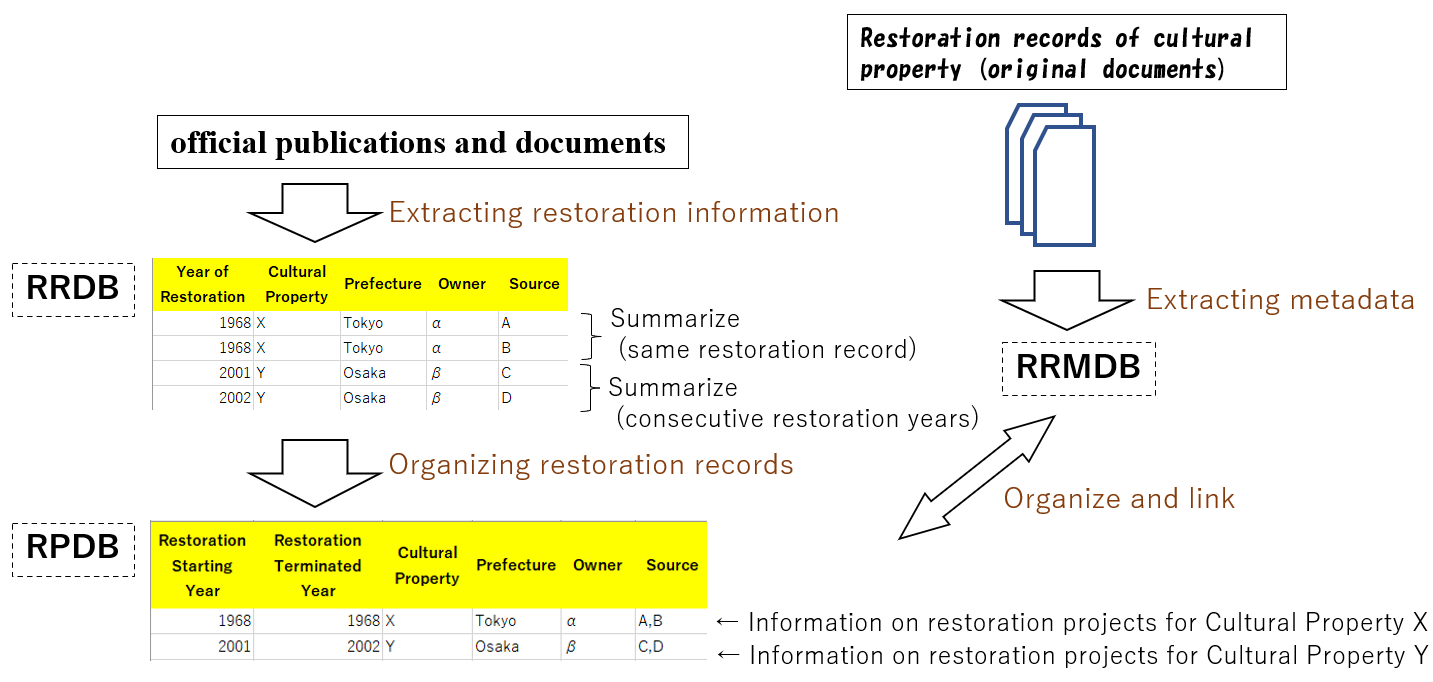2. Method
Considering the above background, we initially collected official publications and documents related to cultural property to determine the amount of property that had been restored. To gain some perspective, we limited our investigation to the nationally designated cultural property (about 12,000 works of arts and crafts). For example, the “Annual Report of the Committee for the Protection of Cultural Property(『文化財保護委員会年報』)” (later becoming the “Agency for Cultural Affairs Annual Report(『文化庁年報』)” is a government report on the administration of cultural property protection. This report provides a useful list of restorations performed each fiscal year. However, even these official annual reports refer to different periods (in this case, from FY1960 to FY1986). By collecting this partial information, the entire picture can be eventually reconstructed.
We extracted metadata of cultural property restoration from different official publications and documents ( ∼ 7,900 records) by November 2023. Furthermore, with the cooperation of the Agency for Cultural Affairs and the Kyoto National Museum, we extracted metadata of cultural property restoration from ∼ 3,600 records, which were previously undisclosed. Using these metadata (extracted from a total of 11,500 records), we initially constructed a “Restoration Record Database (RRDB).” The RRDB was constructed randomly because the amount of data collected from each record varied significantly. In addition, some data collected from multiple documents were duplicates. As a result, restorations that originally spanned multiple years were performed for each separate year. Based on RRDB, a “Restoration Project Database (RPDB)” was separately constructed by integrating duplicate or consecutive-year information and reorganizing it as a single restoration (Figure1).

Figure1. Relationship between each database
Conversely, some restoration records were the same as the original documents. These included restoration design documents, reports, and photographs collected before and after restoration. Since the final objective was to create a digital archive that allows users to search and refer to such documents, metadata extracted from these documents were used to construct a “Restoration Record Material Database (RRMDB),” with a view to linking it with RPDB.